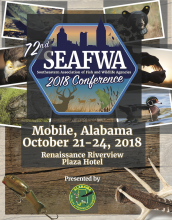Angler Catch and Harvest of Targeted Sportfishes in Small Georgia Lakes
Public fishing areas (PFAs) in Georgia are intensively managed freshwater impoundments that provide a variety of fishing opportunities to an- glers. Management efforts and fishing regulations at these PFAs depend on understanding basic aspects of recreational fishing pressure, catch, and har- vest. Accordingly, we conducted a roving creel survey during January–December 2013 at Marben PFA in middle Georgia to quantify sport fishing total effort, catch, harvest, and fish catch by species, number, and weight in 14 lakes. Almost all of the anglers interviewed (84% of the 1159 parties) targeted...
